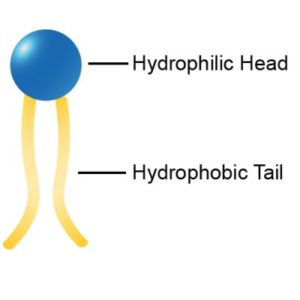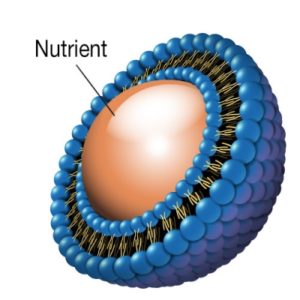What are Liposomes?
Liposomes are bilayer (double-layer), liquid-filled bubbles made from phospholipids. Over 50 years ago, researchers discovered that these spheres could be filled with nutrients and used to protect and deliver these agents into the body and even into specific cells of the body.
The bilayer structure of liposomes is nearly identical to the bilayer construction of the cell membranes that surround each of the cells in the human body. This occurs because of the unique composition of phospholipids. The phosphate (source of “phospho” in phospholipid) head of phospholipids is hydrophilic — it loves water — whereas the fatty-acid tails (lipids) are hydrophobic — they hate water.
When phospholipids find themselves in a water-based solution, the hydrophobic tails quickly move to distance themselves from the liquid just like oil separates from vinegar. So, as all the tails turn inward and all the heads turn toward the liquid, they form a double-layered membrane.


